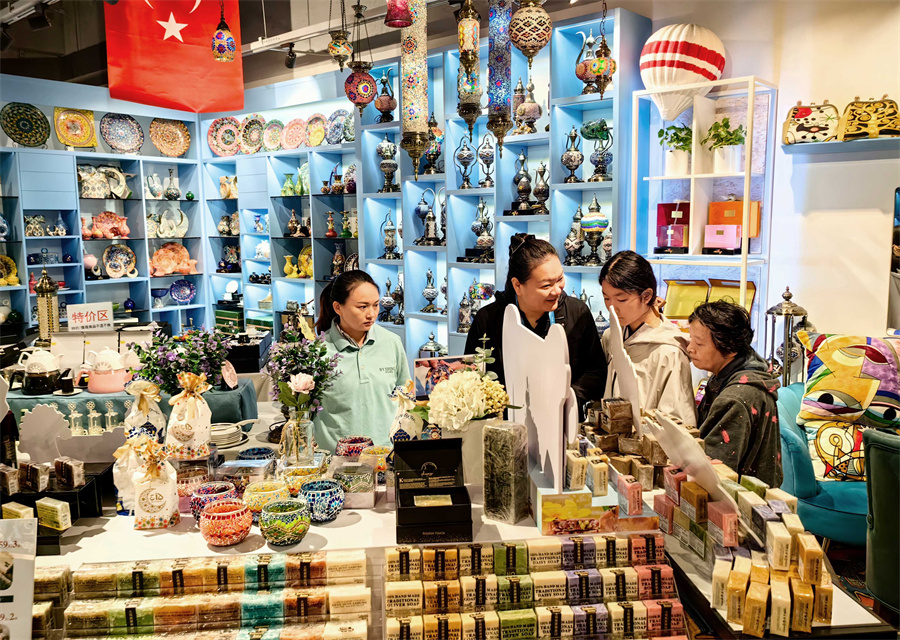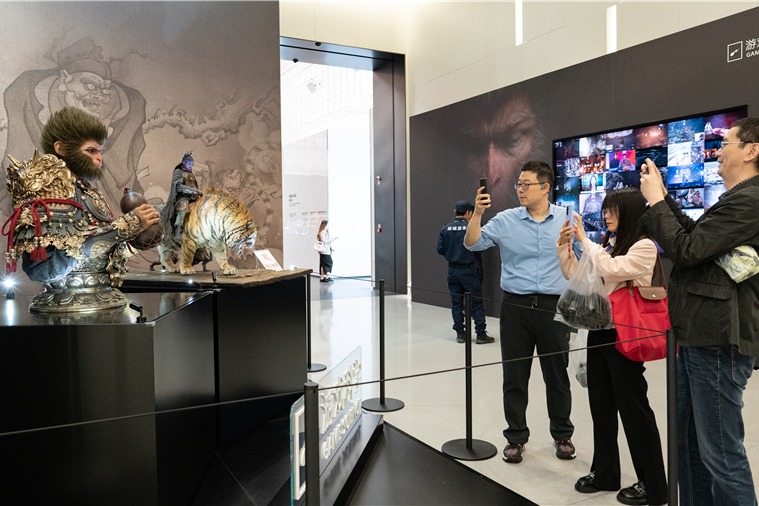New landmarks in Shanghai sweet home for brands
Gateway city's opening-up effort bears fruit as Hongqiao intl hub now a magnet for biz, consumers


The store was a bold attempt by ZZER, or zhi er in Chinese, as it used to mainly sell second-hand luxury goods via e-commerce. Then, in December 2022, ZZER opened the brick-and-mortar store near Hongqiao station and attracted more than 100,000 shoppers within the first six months. The company consequently expanded the initial 3,000-square-meter store to nearly 10,000 sq m in August 2023, and has thus far sold over 100,000 goods, from more than 5,000 international brands.
Zhu Tainiqi, ZZER's founder, said he once thought that only online users would come to the offline venue. To his great surprise, however, consumers from all over China, and even those from Europe, the United States and South Korea, have visited the store, and some of them are now frequent customers.
The upgrading work of the underground business area at The Hub Mall in Hongqiao, where ZZER's store is located, was completed in March, which Zhu said should help attract more customers.
The Hub Mall, covering a construction area of 380,000 sq m and comprising shopping areas, office buildings, a performance center and hotels, receives about 100,000 visitors on a daily basis. More than half of them are from neighboring cities such as Suzhou and Nanjing in Jiangsu, Hangzhou in Zhejiang province and Hefei in Anhui province.
International brands making their China debut by launching stores at The Hub Mall have served as a magnet to consumers. About 52 brands opened regional or national first stores in The Hub Mall last year, accounting for 40 percent of the total number of newly opened stores at the mall in 2024. This has helped the mall consolidate its position as Shanghai's first shopping destination for travelers, according to The Hub Mall's management team.
As understood by Liu Min, deputy director of the Shanghai Municipal Commission of Commerce, the uptrend of launching first stores can kindle new activities in the city's landmarks. This not only boosts consumption at restaurants and hotels, but also facilitates the concentration of businesses.
The opening of first stores can also nurture new business models. On a broader perspective, the presence of more first stores in the city has exemplified industrial upgrading and innovation at the consumption end. A new balance between supply and demand can be reached by introducing more first stores, Liu said.
The number of arrivals at the Hongqiao transportation hub — comprising terminals of an airport, high-speed railways, bus and metro lines — reached a record 438 million in 2024, equaling 1.2 million travelers daily. The number of travelers served by Shanghai Hongqiao International Airport reached 47.97 million last year, a new high.
A good example of how events can increase foot traffic was seen during the Puff Up Bread Festival held at The Hub Mall in late September 2023, the first of its kind to be held in the eastern part of China. On the first day, about 120,000 visitors participated in the festival and all of the bread prepared by the attending bakeries that day — 70,000 packs — were sold out. About 30 percent of the consumption that day was made by visitors from nearby cities.
Actually, translating the increased foot traffic into more economic momentum is part of the mission shouldered by the Hongqiao International Opening-up Hub, a 7,000-square-kilometer integrated development area covering parts of Shanghai, Jiangsu, Zhejiang and Anhui.
According to the framework construction plan of the Hongqiao International Opening-up Hub, which was approved by the State Council in February 2021, the planned area has grown into the country's largest modern comprehensive transportation center thanks to the traffic network in Hongqiao.




































